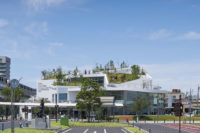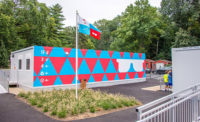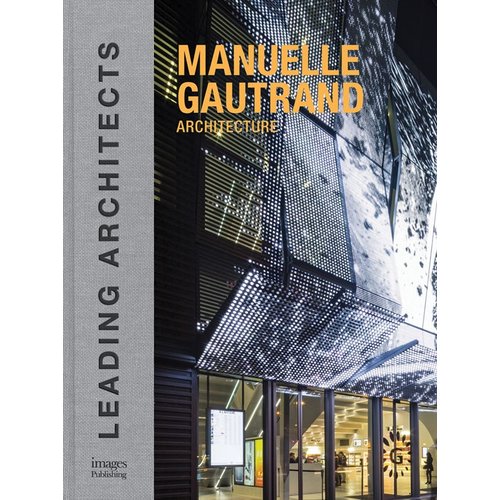Tokyo
Growing up in a planned community on the edge of Osaka, Japan, Akihisa Hirata dreamed of becoming either a biologist or an architect. By designing buildings inspired by smoke, bubbles, and other natural phenomena, you could say that he found a way to do both. What drives Hirata, however, is not purely an academic pursuit. Nor is it aesthetics. Instead, Hirata is searching for a conceptual grounding that engages the public. “Japanese architecture has become very extreme and lost its connection to society,” explains Hirata. “The problem facing my generation is reconstructing that relationship.”
Having received his master's in architecture from Kyoto University in 1995, Hirata came of age architecturally when Japan was still reeling from the Great Hanshin earthquake in Kobe (just 19 miles from Osaka) and the sarin gas attack in Tokyo, when the morale countrywide was low. Against this gloomy backdrop, Toyo Ito introduced his competition-winning scheme for the Sendai Mediatheque, an entirely new type of public space defined by webbed steel columns that tilt like seaweed underwater. “I was shocked by the model photo,” exclaims Hirata. “It showed something very brilliant.” His spirits lifted by Mediatheque's inspirational scheme, Hirata headed to Tokyo, where he hoped to join Ito's staff. Though Hirata only intended to stay for a short stint, he remained for eight years before leaving to launch his own practice.
Predictably, Hirata's first independent project was a new home for his parents. “They didn't ask me to design them a house, but I did it anyway,” chuckles the architect. They didn't ask him to realize the house either, but the project did land him Japan's prestigious SD Review prize. Still in need of wage-earning work, Hirata entered an Internet-based competition for a showroom selling farm equipment. It seemed unlikely that a dealer in tractors and snow blowers out in the sticks would go for Hirata's unconventional design, yet the young designer got the commission and with that his practice was off and running.
As his body of work grows, Hirata's projects have become increasingly organic in form. As opposed to making architecture purely by enclosing space, he proposes a model inspired by the intertwining of different elements in nature, which he calls “tangling.” To illustrate his point, Hirata describes how underwater rocks support seaweed where fish roe mature. “We are making a kind of infrastructure for people based on the ordered layering in the living world,” he explains. His largest application of “tangling” is a new housing complex in the tsunami-ravaged town of Kamaishi. Taking its cues from the hilly topography, this development begins with a three-dimensional scheme that supports a circulatory system feeding a sequence of gathering spaces embraced by individual dwelling units. By layering this and other projects with different uses, Hirata aims for a “tangling” between person and place, with the hope of making architecture that people can once again relate to.
Akihisa Hirata Architecture Office.
FOUNDED: 2005
DESIGN STAFF: 10
PRINCIPALS: Akihisa Hirata
EDUCATION: Kyoto University, B.A. , 1994; Kyoto University, M.Arch., 1997
WORK HISTORY: Toyo Ito & Associates, Architects, 1997'2005
KEY COMPLETED PROJECTS: Photosynthesis, Milan, 2012; Coil, Tokyo, 2011; Bloomberg Pavilion, Tokyo, 2011; Foam Form, Kaohsiung, Taiwan, 2011; Alp, Tokyo, 2010; Architecture Farm, Aodi, Taiwan, 2008; CSH, 2006; Sarugaku, Tokyo, 2006; Masuya, Nigata, Japan, 2005
KEY CURRENT PROJECTS: Kamakishi Project, Iwate, Japan, 2014; Long House, Los Vilos, Chile, 2014
WEB SITE: www.hao.nu

















Post a comment to this article
Report Abusive Comment